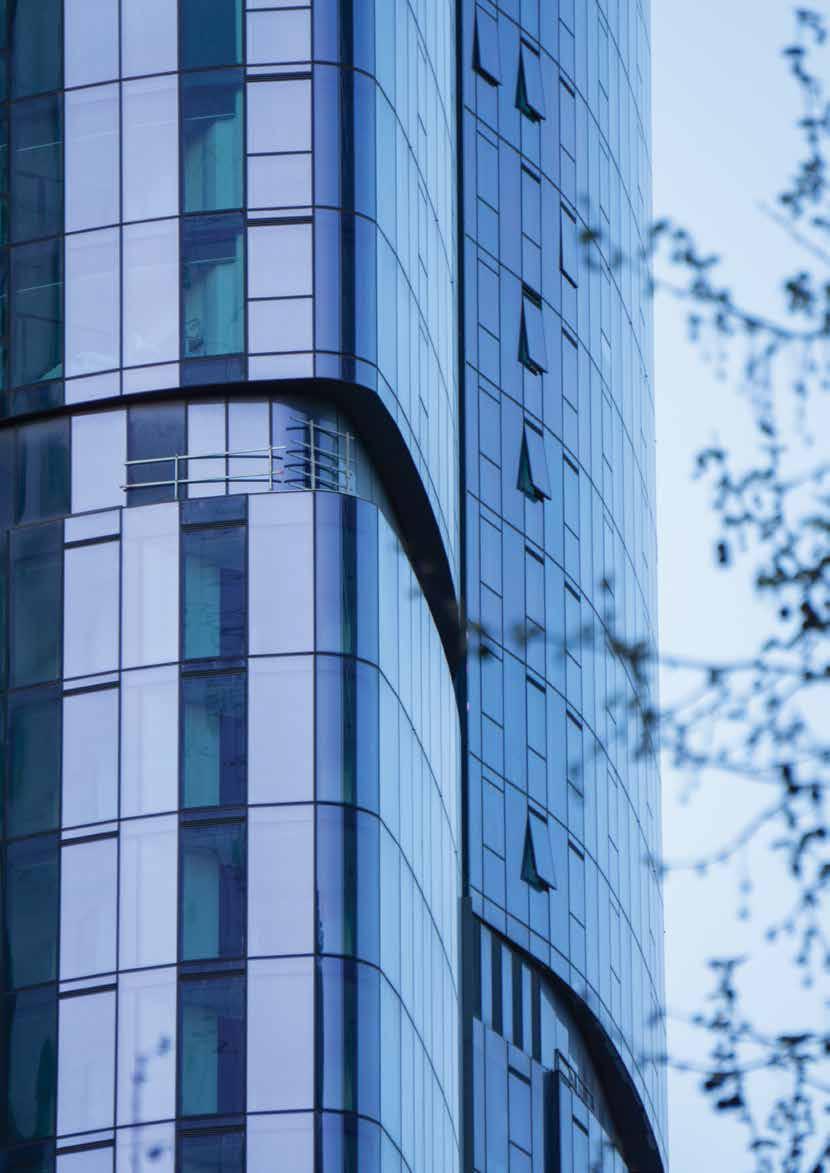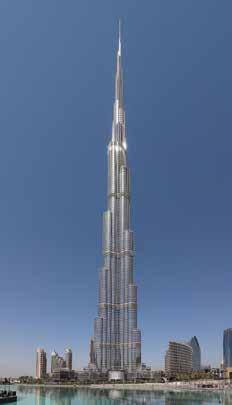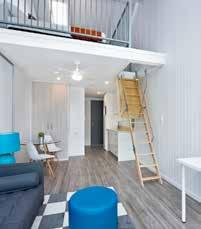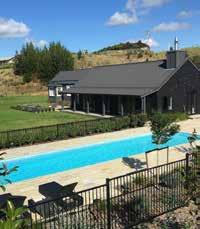
13 minute read
The Hidden Cost of High-Rise
With space in Australian cities at a premium, investors and developers will often look to height to maximise yield through the construction of tall buildings. However, a multitude of notso-obvious hidden costs need to be considered as part of any feasibility study to make sure the uplift in scale is equal to a profitable return for investors and developers.
THE RACE FOR THE SKIES
With ever-diminishing availability of CBD sites increasing land costs and more onerous building setbacks required thought planning, increasing height can seem incredibly attractive. Many developers will assume that adding floors will increase a site’s return and earn ‘tallest building’ accolades. However, it’s not as simple as multiplying the cost of one floor by the number of floors. As well as the obvious additional costs such as well-engineered structure and additional lifts to service upper floors, there are also a multitude of not-soobvious hidden costs that need to be factored into any feasibility study, including the impact on saleable area that is compromised by the increase in lift and other essential service requirements.
WHAT KIND OF SUPERSTRUCTURE IS REQUIRED TO HOLD UP SUPER TALL BUILDINGS?
One hundred+ storey buildings are still a rarity. The famous Burj Khalifa in Dubai at 163 floors above ground and at a height of 830m is still the tallest building in the world. Locally and in particular in our major Australian cities, we are generally more concerned with 200–300m buildings with an average of 70–80 floors. While Australia was quick to jump into building high-rise buildings as the technology became available in the 1990s, currently there are still only 36 built towers (‘sky-scrapers’) that are 200m tall or higher. The Eureka Tower in Melbourne at 91 floors and height of 297m is still the tallest building to roof in Australia.

The Burj Khalifa. Image by Donaldytong
PILES AND MEGA-COLUMNS
Underneath, piles transfer the building’s load to a suitable bearing strata, so if a building is being founded on hard rock, it doesn’t necessarily require any piles. If it does, then their size and number are going to increase proportionately to the load above. A large majority of highrise buildings will use ‘mega-columns’ to transfer loads to the perimeter of the building, which can be sizeable and costly. A typical tower layout using megacolumns may utilise a central core with a series of shear walls and intermediate outrigger walls to transfer the load to the edge of the building which, along with the columns, gradually increase in size and concrete strength as they go down in order to support the load above. For example, concrete columns at the top of the building can increase in diameter by 300% and 100% in concrete strength in the basement. Similarly, concrete core walls can increase by over 200% in thickness from top to bottom. Not only does this increase the average cost of the structure, but the required layout of columns and walls can noticeably impact the efficiency of a floorplate’s structural grid and the need for transfer floors. Assuming a floorplate of, for example, 1,000m², this can increase the elemental cost of the structure from low to high-rise buildings in the region of 40%. As floorplates get smaller, the core-to-floor ratio also goes up and this premium increases.
In addition, this type of configuration with its increased thicknesses and sizes of physical structure reduce net saleable area/net lettable area, and the corresponding wall layouts can reduce the space’s functional efficiency; both of which will affect revenue.
BUILDING MOVEMENT
Despite the increase in size of the structural elements, it is still impractical to try and prevent the building from moving with the wind. At the same time, if it is allowed to move too much, this pushes past the tolerances of standard building products such as facades and internal walls and will require specialised/purpose made components. This would be uneconomic due to the large volumes required. As tall buildings get higher and push up beyond neighbouring buildings, they become more exposed and wind speeds increase. As a rule of thumb metric to counter this, design tolerances generally needs to be engineered to keep the sway at roof level to within the building’s height divided by 500. For example, the 300m high Aurora tower in Melbourne, would move approximately 600mm in both directions, 1.2m in total. In comparison, the 830m Burj Khalifa in Dubai would move approximately 1,660mm in both directions—3.3m in total. While this may seem a lot, the stresses created are spread over the whole height of the building and should remain within the required component tolerances. The more critical factor then becomes user comfort in respect to the speed with which it moves. If it is a slow gentle sway with low acceleration, this will be barely noticeable and acceptable to occupants. However, if wind modelling indicates that acceleration is too fast, this will need to be mitigated. The Burj Khalifa in Dubai has done this largely by changing its shape at different heights and interrupting the wind flows, but most buildings don’t have the height and shape to be able to do this. They have to employ the use of ‘tuned mass dampers’ to reduce this acceleration. These are housed towards the top of the building. Generally, they come in two forms: the liquid type which comprise one or more water tanks with baffles inside to create a dead weight to push against the wind, or a giant pendulum that swings to counteract the building’s movement.
The most suitable type of damper will differ from building to building dependent on the extent and frequency of movement. The cost of the damper can vary from several hundred thousand dollars for a small liquid damper through to the Taipei 101 tower’s US$4m pendulum. Coupled with this comes the additional cost through loss of floor area to house them, and the cost of supporting the increased structural load they create.
BUILDING SERVICES
Building services form a large proportion of any building’s cost and the higher the building is, the more the constraints, options and costs need to be taken into consideration. Mechanical system technology is continually developing but is still restricted by the efficient length of duct and pipe runs. For VAV/VRF systems,
this generally means large ducts and that their plant can only economically service approximately 15 floors up and 15 floors down from the plantroom. This results in large service risers and the introduction of on-floor plantrooms (often double height) at approximately 30 floor intervals up the building. This reduces potential NSA/NLA and adds further costs for greater acoustic and fire separation than if the plant was located on the roof or in the basement. The main alternative to this is to utilise a chilled water system with a central basement and roof plant with pipework circulation meaning smaller risers, but still requiring on-floor air handling plant and access to outside air at a maximum of every 20 floors. While chilled water/ beam systems may reduce the NSA/ NLA lost to risers and plant rooms, it generally comes at a higher initial cost. So depending on building use, the cost benefit of different systems needs to be carefully analysed on a project by project basis in respect to capital cost versus opportunity cost of NSA/NLA. Running cost comparisons must also be considered if the building is to be held rather than sold on. Electrical distribution costs are also greatly affected by cable lengths and subsequent sizes. Running individual low voltage (LV) cables up the height of the building is a lot more expensive than cheaper high voltage (HV) cabling carrying the same load. Hence providing the supply authority is agreeable, it is more cost effective to have the main distribution board/ substation halfway up the building to reduce the length of LV distribution cabling.

Taipei 101’s Pendulum. Image courtesy of Armand du Plessis.

Similarly, if a second transformer is required, the first should ideally be located on the lower levels, around level 10, and the second halfway above as before. But again, in both cases, this leads to loss of NSA/NLA and adds cost for greater acoustic and electromagnetic field (EMF) shielding. Continuity of supply is also essential in high-rise buildings, with backup generators and associated diesel tanks taking up more space and costing hundreds of thousands of dollars. Hydraulic systems follow similar trends of increased pipe and riser sizes. As well, they require intermediate booster pumps for both fire and potable water, while drainage pipes generally require pressure attenuation at regular intervals. Telecommunications will also need additional distribution cabling and potential signal boosting with distributed antenna systems (DAS), which can run into the hundreds of thousands of dollars. Vertical Transport becomes more complex the taller a building gets, with waiting times requiring higher lift speeds and dedicated lifts for higher floors— more goods lifts going higher up the building to plant floors and substations and potential shuttle lifts from carparks to lobbies etc. With each of the upper level lifts costing in the millions of dollars, extensive modelling is required to match the needs of each type and grade of building to keep numbers to a minimum. It is not just the increase in the number of lifts that counts—there is also the knockon effect to the building’s core(s). As noted earlier, the lower levels have the largest structural footprint which is further compounded by significant losses of useable area/efficiency from having to accommodate lift shafts that don’t service their floors.
Meanwhile on the upper floors, as the lower level lifts fall away, there is the additional cost of making changes to the concrete jump-form each time there is a change in core layout. Building Maintenance Units (BMUs) for façade cleaning and access also offer challenges. Many tall buildings physically step in as they get higher which may require use of a telescopic BMU to extend out over the lower levels or incorporate additional units at each step until either a davit or rope access system can be utilised. But even if the building is straight-sided, the practicality of suspending a swinging cradle over 100 floors is not necessarily realistic. Alternately, if the vertical profile of the building is not regular then more expensive solutions and bespoke systems like tracked crawler cradles may have to be developed. All of these options can cost in the millions of dollars.
PRODUCTIVITY AND PROGRAM
As height increases, productivity decreases. Simple things like clocking on and getting to the work face take longer, as travel times and wait times for the hoists increase. Similarly, materials handling and tower crane hook-time become crucial, as longer lift times directly impact the program. It then becomes a balance of when and how many—additional hoists and cranes to add to the cost of the job to maintain productivity. This is an equation that becomes even more complex when a building rises above neighbouring structures and the work face becomes more exposed to the wind. This causes increased crane time lost to inclement weather, resulting in even longer programs.
To help mitigate the increased time for labour movements, it also becomes more economic to introduce multiple sets of site amenities at regular intervals up the building rather than having to travel down to ground or basement levels. While this helps productivity, it still carries the additional costs of the rooms themselves and complexities of getting early temporary services, (especially hydraulics), to the higher levels of the building. Another factor when considering the construction of tall buildings is that they take several years to build, and that the level of rear end debt before revenue starts to flow is considerable. Hence bonuses are often offered for early completion and where possible, separable portions programmed to allow early handover of lower levels of the building. But these generally come at a cost as they may require the acceleration / out of sequencing of works such as lobbies and central plant; temporary entries, hoardings and services; mid-shaft lift motor rooms and disruption to the contractor’s access and materials handling.
PAN-OPS
If planning regulations truly allow the sky to be the limit, there may still be an additional height limiting and cost factor. As many of our major cities are crossed by aircraft flight paths, they are subject to PANS-OPS (Procedures for Air Navigation Services—Aircraft OPerationS) regulations, essentially maintaining an obstacle free zone. These set a base height that buildings may not penetrate, i.e., a maximum height for the ‘finished’ building. However, in order to maximise building height potential and physically build to this level, tower cranes for example, need to temporarily penetrate this air space. This is generally permissible upon application to the relevant airport authority but is subject to a time related charge that needs to be added to the Contractor’s Preliminaries. The differences these hidden costs can create between low, medium and high-rise apartments are illustrated on the next page.
ELEMENTAL COST - MODEL - PERCENTAGE OF OVERALL COST
LOW-RISE MEDIUM-RISE HIGH-RISE Element % % % Substructure 3% 2% 1% Superstructure Structure 16% 17% 18% Façade 12% 12% 13% Internal fitout 35% 32% 25% Sub-total - Superstructure 63% 61% 56% Services M&E and builders' services 17% 18% 20% Lift installations / BMU 1% 3% 5% Sub-total - Services 18% 21% 25% Preliminaries, OH&P, contractor's risk, contingency 16% 16% 18% Total 100% 100% 100%
Substructure
Structure
Façade
Internal fitout
Services
Preliminaries
IN SUMMARY
None of these challenges and cost premiums are insurmountable given the right yields and rates of return. However, all of them should be workshopped, modelled and analysed before considering adding those few ‘extra floors’. They may just mean an additional plant level, lift, tuned damper or month(s) of rear end debt. As an example, based on our cost modelling, an optimum height for 600–750m² floorplate CBD apartments is between 55–60 floors. After this, the extraneous costs of dampers, additional mid-level plantrooms, substations, cranes etc. may start to kick in.
This will then require another 15–20 floors of revenue to offset such costs. All of these factors when properly balanced lead to successful developments. It is therefore imperative that accurate costing and continuing cost management through the design and construction phases of these projects is sought from industry professionals with extensive experience in the high-rise field.
This article has been provided by Slattery and was showcased in their Kaizen series publication.
0% 5% 10% 15% 20% 25% 30% 35%
ONE SOLUTION FOR ALL YOUR STRUCTURAL, ACOUSTIC, FIRE & WATERPROOFING NEEDS

Dincel Structural Wall is a lightweight permanent formwork system, which when filled with ready mixed concrete, produces a load bearing, fire resistant structural wall. Easily connected by internationally patented ‘snap lock’ joints, the Dincel wall can be built faster and cheaper than traditional methods.
Dincel has been used in over 7,000 projects nationally and internationally for internal and external walls. It’s water proofing ability also makes it perfect for tanks or swimming pool applications.
Full systems tested to AS 5637.1/AS ISO 9705 for internal walls, AS 5113/ BS 8414 for external façade walls and CSIRO certified as waterproof under 6m head of pressure.
WWW.DINCEL.COM.AU
1300 DINCEL
FAST & SIMPLE INSTALLATION


SAVE ON TIME & MATERIALS EASY TO CLAD OR RENDER











